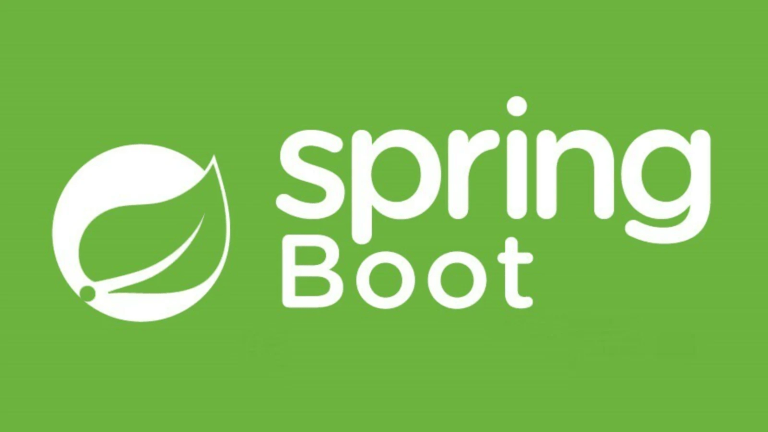Spring Boot gRPC Tutorial: Build Your First gRPC API in Java
Building high-performance, scalable APIs is a core aspect of modern application development. gRPC, a high-performance RPC framework, has emerged as a powerful alternative to REST, offering advantages like bidirectional streaming, reduced latency, and an efficient binary format. If you’re developing microservices with Spring Boot, learning to integrate gRPC can unlock significant efficiency for internal service communication.
This tutorial guides you through building your first gRPC API in Java using Spring Boot. You’ll learn what gRPC is, why it’s a great choice, and step-by-step instructions for implementing it—including adding TLS (encryption), testing, and Dockerizing the solution.
Table of Contents
- What is gRPC and Why Use It?
- Setting Up Maven with the Protobuf Plugin
- Creating a .proto File for Service and Messages
- Generating Stubs Using Protobuf
- Implementing the gRPC Service in Spring Boot
- Creating a gRPC Client in Spring Boot
- Testing with grpcurl
- Adding TLS Support
- Containerizing with Docker
- GitHub Repo with Full Example
- FAQs
- Summary
What is gRPC and Why Use It?
gRPC (gRPC Remote Procedure Call) is an open-source RPC framework developed by Google. Unlike REST, which relies on HTTP and JSON, gRPC leverages HTTP/2 and Protocol Buffers (Protobuf) for efficient, low-latency communication. It’s especially powerful for microservices due to its support for:
- Bidirectional Streaming: Real-time communication between client and server.
- Compact Binary Messages: Protobuf serialization reduces payload sizes compared to JSON.
- Cross-Language Support: gRPC supports multiple programming languages, making it ideal for heterogeneous environments.
- Built-In Code Generation: Code generation tools create client and server stubs from
.protofiles, speeding up development.
For more detailed gRPC documentation, refer to the official gRPC documentation.
Setting Up Maven with the Protobuf Plugin
To get started, configure Maven to include the gRPC and Protobuf dependencies.
Add Dependencies
Update your pom.xml with the following dependencies:
<dependencies>
<!-- Spring Boot Dependency -->
<dependency>
<groupId>org.springframework.boot</groupId>
<artifactId>spring-boot-starter</artifactId>
</dependency>
<!-- gRPC Dependencies -->
<dependency>
<groupId>io.grpc</groupId>
<artifactId>grpc-netty</artifactId>
<version>1.56.0</version>
</dependency>
<dependency>
<groupId>io.grpc</groupId>
<artifactId>grpc-protobuf</artifactId>
<version>1.56.0</version>
</dependency>
<dependency>
<groupId>io.grpc</groupId>
<artifactId>grpc-stub</artifactId>
<version>1.56.0</version>
</dependency>
</dependencies>Configure Protobuf Plugin
Next, configure the Protobuf plugin to define where the generated Java files should reside:
<build>
<plugins>
<plugin>
<groupId>com.google.protobuf</groupId>
<artifactId>protobuf-maven-plugin</artifactId>
<version>0.6.1</version>
<executions>
<execution>
<goals>
<goal>compile</goal>
<goal>compile-custom</goal>
</goals>
</execution>
</executions>
<configuration>
<protocArtifact>com.google.protobuf:protoc:3.24.0</protocArtifact>
<pluginId>grpc-java</pluginId>
<pluginArtifact>io.grpc:protoc-gen-grpc-java:1.56.0</pluginArtifact>
</configuration>
</plugin>
</plugins>
</build>This setup enables Maven to detect .proto files and generate Java classes during the build process.
Creating a .proto File for Service and Messages
The .proto file defines the structure of the gRPC service and messages it exchanges.
Example .proto File
Create a src/main/proto/helloworld.proto file:
syntax = "proto3";
package helloworld;
// Service Definition
service Greeter {
rpc SayHello (HelloRequest) returns (HelloReply);
}
// Message Definitions
message HelloRequest {
string name = 1;
}
message HelloReply {
string message = 1;
}This file declares:
- A
Greeterservice with aSayHelloRPC method. - Two messages (
HelloRequestandHelloReply) for client-server communication.
Learn More About Protobuf Syntax
Generating Stubs Using Protobuf
Run the Maven build command to generate client and server stubs:
mvn clean compile
The generated classes will be located under target/generated-sources.
GreeterGrpc.javacontains the required methods for server and client.
Implementing the gRPC Service in Spring Boot
Create a Spring Boot service by implementing the GreeterGrpc.GreeterImplBase class.
gRPC Service
@GrpcService
public class GreeterService extends GreeterGrpc.GreeterImplBase {
@Override
public void sayHello(HelloRequest request, StreamObserver<HelloReply> responseObserver) {
String message = "Hello, " + request.getName();
HelloReply reply = HelloReply.newBuilder().setMessage(message).build();
responseObserver.onNext(reply);
responseObserver.onCompleted();
}
}Register the service with Spring Boot by annotating it with @GrpcService.
Creating a gRPC Client in Spring Boot
The client lets you send requests to your gRPC service programmatically.
gRPC Client Setup
@Component
public class GreeterClient {
private final GreeterGrpc.GreeterBlockingStub stub;
public GreeterClient() {
ManagedChannel channel = ManagedChannelBuilder.forAddress("localhost", 6565)
.usePlaintext()
.build();
stub = GreeterGrpc.newBlockingStub(channel);
}
public String sayHello(String name) {
HelloRequest request = HelloRequest.newBuilder().setName(name).build();
return stub.sayHello(request).getMessage();
}
}This client communicates with the server’s SayHello method.
Testing with grpcurl
Install grpcurl, a command-line tool, to test gRPC services.
Test Command
grpcurl -plaintext localhost:6565 helloworld.Greeter/SayHello -d '{"name":"John"}'You should see a response like:
{
"message": "Hello, John"
}Adding TLS Support
To secure gRPC communication:
- Generate SSL certificates.
- Load certificates into the server and client.
- Modify
ManagedChannelBuilderto use.useTransportSecurity().
Containerizing with Docker
Create the following Dockerfile:
FROM openjdk:17-jdk-alpine COPY target/grpc-spring-app.jar app.jar ENTRYPOINT ["java", "-jar", "app.jar"]
Build and deploy your application using Docker.
GitHub Repo with Full Example
Access the complete project here:
GitHub – gRPC Spring Boot Tutorial
FAQs
Can gRPC Work Without Protobuf?
No, Protobuf is integral to gRPC.
Is gRPC More Efficient than REST?
Yes, due to its binary format and HTTP/2 transport.
What Tools are Best for Testing gRPC?
grpcurl, Postman, or GUI tools like BloomRPC.
How Do I Secure gRPC APIs?
Use TLS and interceptors for authentication.
Is gRPC Compatible with Existing REST APIs?
Yes, using adapters like gRPC Gateway.
Summary
Building a gRPC API with Spring Boot combines efficiency, scalability, and simplicity. By following this guide, you’re equipped to create robust systems that handle complex microservice architectures. Visit the provided GitHub repo to explore the full project and take your knowledge further.



